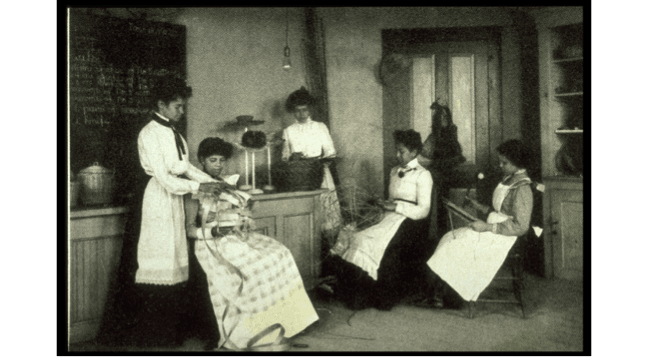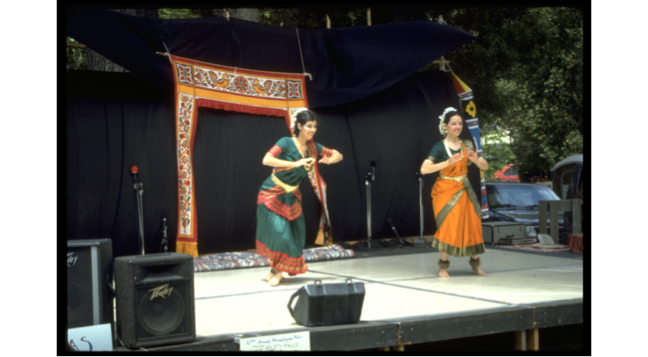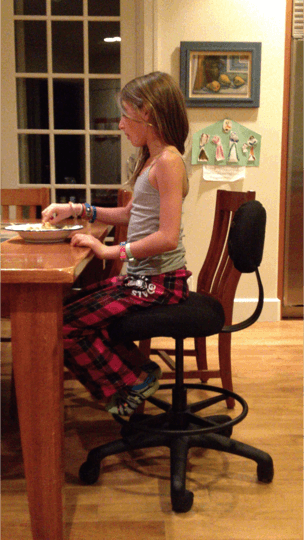Healthy Posture in the Office
I used to focus on growing the posture movement by teaching individuals—one back at a time. But over the years, after teaching couples, parents and children, and entire offices the Gokhale Method, I've noticed that the results are deeper and better retained with family or work groups.

Having communal areas and activities allows posture traditions to be reflected and passed down.
One particular example of teaching an entire office comes to mind. A law office in Tucson, Arizona, arranged for employees and family members to take the Gokhale Method Foundations Course, and there was a significant synergistic effect in their results. Many years after completing the course, they still remind each other to squeeze their glutes and hip-hinge. The office administrator believes that having learned together "reinforced the method within our group. We have an ongoing dialogue." When you learn with a community, the lessons remain alive and growing, showing sustained results that are multiplied and supported by the group.


Humans are natural mimics and will follow the examples set by others. Above: Esther Gokhale doing Bharatanatyam sets the stage for her daughter Maya White to do similar moves.
One of the workers from the law office remarked that "[we] helped each other remember some finer points and details of the techniques after we returned to the office. For example, remembering to use the breath to lengthen the spine when stacksitting, or hip-hinging properly over file cabinets." Undertaking a health initiative in the office introduced health into the conversation, bolstering the warmth and synergy of their office culture. Because of this "group effect," I routinely recommend that students recruit a close friend, colleague or family member into the course with them.

Learning posture with your partner helps reinforce new habits through recognition and active support.
Enhanced knowledge about healthy furniture and a more ergonomic approach to working can vastly improve quality of life. You don’t need much to be able to find a comfy position, but you do need to steer clear of furniture that will set you up for bad posture. Rounded seats and overly padded couches can force you into painful positions, and an improper desk setup can discourage good posture practices.

A small, firm support is enough for this woman to remain upright and relaxed in the marketplace.
Years ago, I coined the word "posturenomics™" to reflect the philosophy that healthy movement isn't only determined by tables and chairs, but also knowledge. Because we spend so many hours a week at work, employers have a wonderful opportunity to increase the quality of the workplace simply by bringing in posture education and encouraging dialogue around form.

A group class provides an ideal setting to watch and learn both what to do and what not to do from others, as well as receive friendly support.
Groups I've taught have enjoyed a number of unexpected benefits, including:
- less injury
- faster healing
- improved emotional outlook
- improved skills in negotiation
- increased peacefulness in body and mind
One of the Tuscon students took note of "the improved appearance of my coworkers and family. I think the use of the Gokhale Method makes people look more youthful, attractive and vital."


Does one pose look more comfortable and vital than the other? Which position would you rather embody? Which shape would you rather have in view?
How much of a difference do you think it would make to you if your colleagues were talking, thinking, and training in healthy posture? Please share in the comments below!

great article as usual.
great article as usual. Although I have to ask, the picture near the end of the female student sitting upright, whilst it's a drastic improvement over the slouching posture below, does it not look a bit like her ribs are flaring and shoulder blades maybe winging a little, maybe even a little bit of shrugging from the traps? I just ask as I have a similar look when I try to get into good posture and I have those problems too. Or am I completely wrong?
Keep up the good writing.